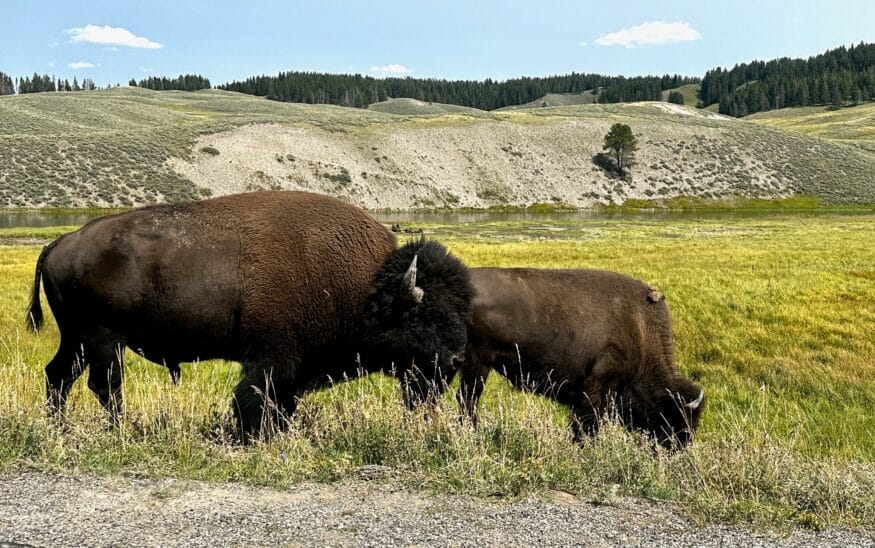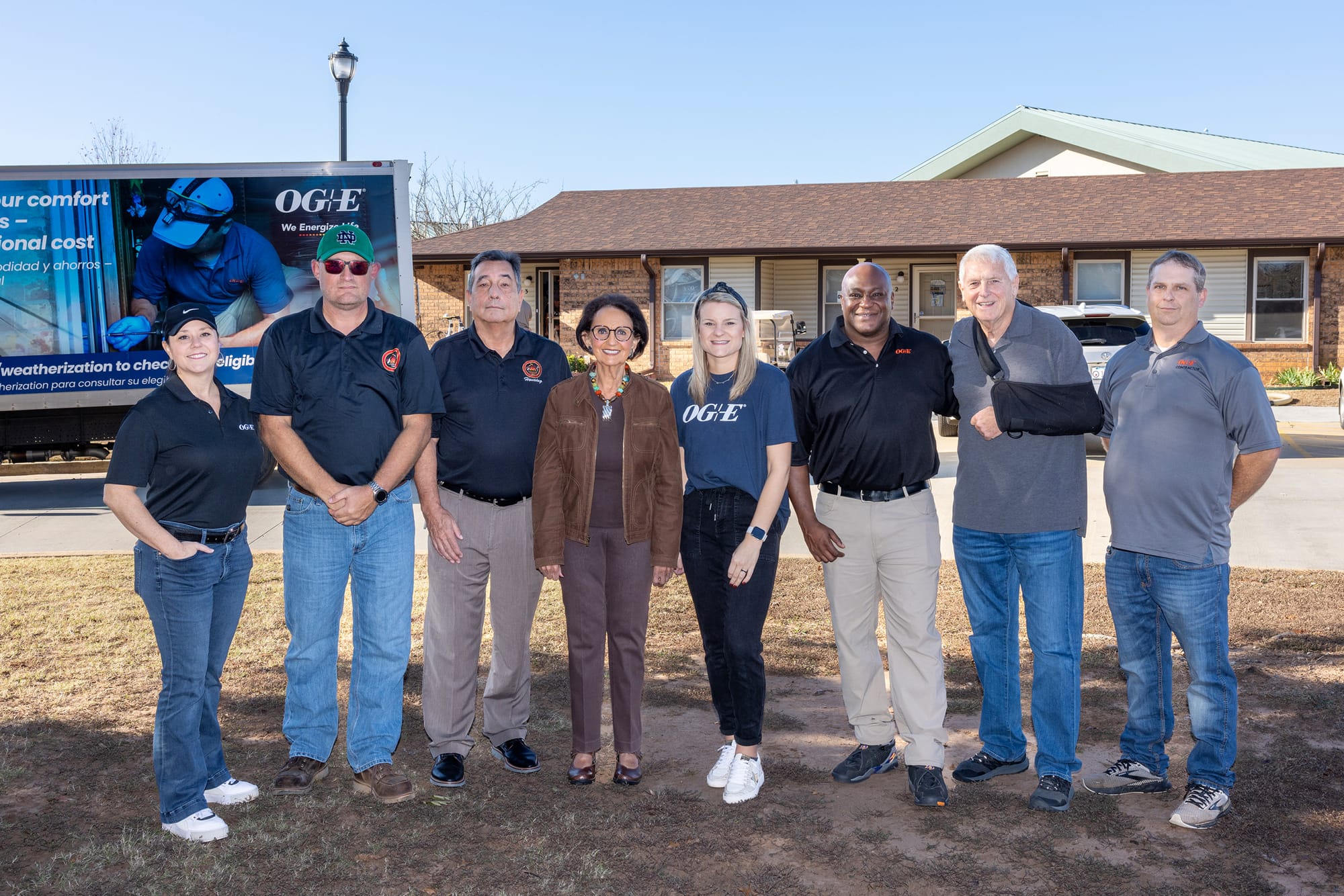

Removing Osage Wind farm leaves school district with huge funding gap

by Curtis Killman, Mike Simons Tulsa World
Five years ago, the Shidler School District was in a tough spot.
Located in northwestern Osage County, the district’s high school and middle school facilities — nearly 100 years old — had seen their better days.
A corner of one building was supported, in part, by a multi-ton jack to prevent collapse.
Natural gas to the school buildings had been shut off due to line leaks, forcing the cafeteria staff to use slow cookers and electric skillets to cook breakfast and lunch for students.
The school auditorium flooded nearly every time it rained. Once the water was so deep that the Fire Department was called to help pump it out. Classroom floors and hallways were covered with plywood because the floors underneath had warped and weakened over time.
The school’s property insurer and the state fire marshal were both saying time was running out to fix the problems. But there was hope for the school district, which extends over 500 square miles in northwestern Osage and eastern Kay counties.
An 84-turbine wind farm had begun operation in 2015, and much of it was in Shidler Public Schools’ figurative backyard. The 150-megawatt wind farm was built on 8,400 acres leased from surface estate owners in Osage County.
The project was expected to bring in $1 million per month for the wind farm owner, Osage Wind LLC, according to court records associated with the project. For the school district, the wind farm project was expected to bring in nearly $500,000 a year in additional revenue in the form of property taxes, franchise fees and other payments.
Based on the anticipated new revenue stream, Shidler school district voters on Feb. 2, 2019, approved by a 71% margin a nearly $17 million bond issue to construct a new high school and middle school.
In addition, the bonds financed construction of a new cafeteria, kitchen, safe room, library, lighted parking lots, turf courtyard, practice gym and meeting spaces for all patrons.
“It honest to goodness saved our school district,” Shidler Schools Superintendent Rick Rogers said, referring to the wind farm.
But now with nine years’ worth of payments left to retire the debt, Rogers said he has to rethink how the district of 180 students in kindergarten through 12th grade will repay the bonds after a federal judge in December ordered the removal of the wind farm.
“I’m feeling badly that we made a promise with the commitment from our partners at (Osage Wind owner) Enel that they were going to be unlike a lot of companies that protest their taxes down to a point where schools are waiting for years to get their money.
“They’ve been a good, solid company to help us,” Rogers said.
Definition of mining at crux of issue
After more than 14 years of litigation, a federal judge ruled Dec. 20 in favor of the United States and the Osage Nation, or more specifically the Osage Minerals Council, by granting a permanent injunction against the wind farm and ordering its removal. The Osage Minerals Council is an independent agency within the Osage Nation government.
Defendants in the case are Osage Wind LLC, wholly owned by Enel Kansas LLC, which is wholly owned by Enel Green Power North America Inc., according to court records.
Federal Judge Jennifer Choe-Groves, with the U.S. Court of International Trade, issued the ruling while sitting by designation in Tulsa federal court.
Prior to the ruling, the wind farm had survived two federal district court challenges before a federal appellate court reversed a lower court decision and ruled for the tribe and the United States.
At issue was Osage Wind’s use of materials excavated at the 84 wind turbine sites.
Osage Wind excavated sand, soil and rock while digging holes for the turbines. Some of the rock was crushed and used as backfill to support the wind turbines, according to court records in the case.
The 10th U.S. Circuit Court of Appeals, in its 2017 ruling for the tribe and federal government, said Osage Wind’s crushing of some excavated rock for use as a structural support for each wind turbine constituted mining and therefore required a lease issued by the Osage Nation’s Minerals Council.
The U.S. Supreme Court subsequently turned down Osage Wind’s request to review the appellate court ruling.
The area now known as Osage County was designated by Congress in 1872 as a reservation for the Osage Nation.
Under the Osage Act passed in 1906, Congress severed the surface estate rights from the mineral estate rights.
Osage Nation members were allotted surface estate rights while the mineral estate was reserved for the benefit of the Osage Nation.
The Osage Nation could issue leases for oil, gas and other minerals with the approval of the secretary of the interior.
But Osage Wind never obtained a mining lease — either before or after the 10th Circuit ruling.
As a result, Choe-Groves determined that the wind farm had and continues to trespass on the Osage Mineral Estate in part because the continued use of rock as fill material for tower support falls within the definition of mining, triggering the need for the lease.
Trial to determine damages amount
Choe-Groves has set a May 20 trial date to consider how much in damages to award the plaintiffs.
The federal government and Osage Minerals Council have urged the court to adopt a damages estimate of nearly $26 million.
Osage Wind, meanwhile, has asked the court to adopt one of two damages calculations that places the value of the material used at between $68,993 and $247,979.
In considering whether to order removal of the wind farm, Choe-Groves had to weigh protecting the sovereignty of the Osage Nation against Osage Wind’s claims that removal would result in revenue lost to local schools, income for the six surface estate owners and renewable energy for 50,000 homes.
In addition to Shidler Public Schools, neighboring Woodland Public Schools also receives tax funding from the wind farm, according to Rogers, who previously worked there. A spokesperson at Woodland Public Schools could not be reached for comment.
Rogers, meanwhile, said he hopes his district’s concerns aren’t lost in the ongoing debate over damages after revenue generated from the wind farm “just completely turned things for the positive.”
Rogers, meanwhile, said he hopes his district’s concerns aren’t lost in the ongoing debate over damages after revenue generated from the wind farm “just completely turned things for the positive.”
Rogers said he came forward with Shidler Public Schools’ story in hopes that it would let the public know the ruling’s impact on those outside of the Osage Nation and the wind farm company.
“The other side of the story needed to be told, because if people know they are going to have to pay the equivalent of an additional half a million dollars a year — they can’t afford that,” Rogers said.
Rather than reallocate the bond payment to the property owners in the school district, Rogers said he more than likely will have to seek refinancing that extends the bond payments out more years.
Local attorneys representing Osage Wind declined to outline the economic impact of removing the wind farm or otherwise comment on the case. The Osage Minerals Council chairman could not be reached for comment.

ICYMI: New federal money helps tribe grow bison herd

By Heide Brandes, The Journal Record
In Concho roams one of the largest plains bison herds in North America. More than 700 strong, the Cheyanne-Arapaho’s herd contributes meat products on a limited basis, but it mostly keeps traditions and heritage strong in the small rural tribal community.
That’s about to change, thanks to new federal money. The Cheyenne and Arapaho Tribes of Oklahoma was among three tribal communities to receive a total of $1.5 million aimed at expanding and sustaining their bison restoration efforts. Funded through the Department of the Interior’s Bureau of Indian Affairs earlier this month, The Cheyenne and Arapaho Tribes of Oklahoma will double the area of pasture to make room for growing their herd and will help fund a market study for the feasibility of selling bison products to a wider Oklahoman market.
“We have always had a herd at some capacity, but the numbers were small, maybe 20 or 150,” said Cheyenne and Arapaho Governor Reggie Wassana.
“But ours has grown since I’ve been in my administration six years ago. We bought an additional 80 or 150 out of an online auction in Foss, and then we received some from Denver, Colorado. We are also going to trade with a rancher in Colorado to get some different bloodline.”
Because bison are bigger and more aggressive than cattle, most of the funding will be used to erect fences for additional grazing land.
“The fencing and everything has to be bigger and sturdier because if a buffalo wants to go through somewhere, it’ll go through it,” Wassana said. “We are very appreciative of the grant because now we can actually open up some more ground that we own. They’re not just set out on the range, and they just take care of themselves. You have to maintain them and watch them for any health issues or outbreaks.”
Wassana said he hopes to grow the herd to more than 1000 head, spread over tribal-owned land in Concho, The Colony and Kenton. Ultimately, Wassana said he wants to make the herd economically sustainable and beneficial for the tribe by selling bison meat and products to the public. Currently, the tribe harvests small numbers of bison for the Diabetes Wellness Program, Elder Nutrition Program and other food services. Bison are also used for ceremonial purposes.
“I would like us to turn over 300 to 400 buffalo every year, whether it’s for processing for tribal program needs or for economic development as part of that processing,” Wassana said. “We’d like to look at producing jerky, buffalo burgers or things like that. Maybe sell the meat in specialty shops that want leaner meat.”
The Three Affiliated Tribes of the Fort Berthold Reservation in North Dakota will leverage the funds to build a 10,000-acre pasture on tribal lands to support expanding their 250-strong herd. The expansion will allow for an eventual capacity of 4,000 bison. The Shoshone-Bannock Tribes of the Fort Hall Reservation in Idaho plans to grow its herd from 465 to roughly 1,100 by purchasing additional buffalo and developing their bison-raising operations with more staff and economic development.
“Right now we’re not making the revenue that it would take to actually offset the expenses (of maintaining the herd,” Wassana said. “We always feel that if we can get the numbers up and turn the numbers over that it would support itself and we would at least get to that breakeven point.”
He added that the heritage of the tribe’s relationship with the animal was also a driving force in maintaining a herd. Estimates suggest 100 million bison roamed North America before the western settlement of the United States. Overhunting and culling led to the systematic slaughtering of bison west of the Mississippi in the 1800s, which led to an near extinction of the animal.
“Buffalo are part of our heritage and our culture,” Wassana said. “On the plains, we looked for the Buffalo for our livelihood, not just for food, but for everything we did.”

Elders receive home updates to lower winter bills

By Tina Bridenstine, Citizen Potawatomi Nation Public Information Department
Citizen Potawatomi Nation partnered with Oklahoma Gas & Electric to weatherize homes for Tribal elders in November.
The utility company arrived at Father Joe Murphy Elder Housing, near Shawnee, Oklahoma, Nov. 8 and 9 with supplies and volunteers, completing basic work on 35 homes in the community.
“We wanted to ensure our elders are comfortable and reduce their electric bills during the hot summer and cold winter months in Oklahoma,” CPN Vice-Chairman Linda Capps said. “We were thrilled to learn that OG&E could weatherize the homes in the Father Joe Murphy housing community. We are grateful for their continued partnership and critical investment in our community.”
Volunteers assessed what was needed at each unit and then made the necessary updates, such as weatherstripping and caulking to seal air leakage around windows and doors, blowing insulation in the attic, duct sealing, air conditioner and furnace tune up, and installing energy-saving light bulbs. The improvements, which came at no cost to the residents, were intended to increase energy efficiency to make homes more comfortable in months of extreme temperatures and to lower electric bills.
“We’re out here today with about 20 to 30 OG&E employees, as well as Skyline Energy Solutions weatherization contractors,” OG&E Lead Program Manager Toney Cooper said. “First, we go in and do tests to determine where the leakage is in the home. Once we determine that, we come back in and provide cost-effective energy measures, such as adding attic insulation where needed. Customers immediately feel a lot more comfortable. The home is a little warmer and, obviously in the summertime when we have that Oklahoma heat, the home is a lot cooler.”
Justin Whitecotton, CPN electrical director, said the Tribe participates in many commercial programs through OG&E to save on energy costs, and the recent improvements at Father Joe Murphy Elder Housing are a perfect example of that.
“It’s going to save the tenants a lot of money,” he said. “Saving electricity is good for the planet and good for their wallets at the same time, so it’s kind of a win-win all the way around.”
Scott George, CPN’s Housing Department director, said the houses in the complex are all part of a low-income program, where elders pay no more than $250 per month for rent but are responsible for all their own utilities.
“It’s really important for us to try to make the houses as efficient as possible,” he said. “We were seeing some of our tenants starting to suffer with the electric bills. They’re on a fixed income, so anything we can do to help lower that bill puts money in their pocket to use elsewhere.”
“Our electric bills have been pretty high during the summer, and we had no idea OG&E had a program like this,” Father Joe Murphy resident Ruthann Smith said. “I know there are some spaces around my doors and windows that need to be fixed because you can see daylight, which means cold air is coming in. It’s good to know that OG&E cares. It means a lot that they are a part of our community and they are really helping us out.”
The weatherization program that made the updates at Father Joe Murphy possible is one available to all qualifying OG&E customers. It is available to customers who own or lease a single-family, duplex or mobile home who have a household income of less than $60,000 per year. In Oklahoma, 50,000 customers have had weatherization improvements through the program since 2009.
“Changes in temperature can significantly affect your home, and OG&E’s weatherization program helps customers who need it most combat the impact of extreme temperatures during the summer and winter,” Cooper said. “Our partnership with Citizen Potawatomi Nation and Father Joe Murphy Elder Housing shows how simple improvements can make a home more comfortable and monthly bills more manageable. We are proud to help energize the lives of our tribal customers through this key partnership.”

Cherokee Nation awarded up to $900k grant to help further Cherokee language efforts

Living Language Grant Program will focus on growing Cherokee language teachers
TAHLEQUAH, Okla. — The Cherokee Nation has been awarded a grant worth up to $900,000 over the next three years from the United States Department of the Interior to help the tribe continue to perpetuate the Cherokee language.
The Living Language Grant Program will expand the duties of the existing Teacher Bridge project, which was created to increase both learner proficiency and professional skills for Cherokee Language Master/Apprentice Program graduates as they become Cherokee language teacher candidates
The tribe received an initial $300,000, with additional funding every year for two additional years based on funding appropriations from Congress.
“An important part of preserving and celebrating our shared Cherokee heritage is by creating a new generation of Cherokee speakers who can continue to perpetuate the language and teach others about how to speak it,” said Principal Chief Chuck Hoskin Jr. “The Cherokee Language Master/Apprentice Program and our immersion schools are prime examples of how we’re showing our commitment to keeping our language alive for future generations. These grant funds will bolster our work and support the historic, ongoing language efforts we have undertaken, including the recent permanent reauthorization of the historic Durbin Feeling Language Preservation Act.”
Chief Hoskin and Deputy Chief Bryan Warner recently proposed, and the Council of the Cherokee Nation later approved, making the Durbin Feeling Language Preservation Act permanent with an $18 million operating budget at minimum each year. The Durbin Feeling Language Preservation Act was introduced by Chief Hoskin and Deputy Chief Warner and approved by the Council in 2019 to provide millions of dollars for language preservation efforts. It became the largest language investment in the tribe’s history.
The new grant funding from the federal government will allow the tribe’s Teacher Bridge staff and candidates to use what they garner from the Teacher Bridge program to create training curricula and materials and provide instruction through professional development to teachers in the Cherokee Language Department. The program will focus on, but not be limited to, Cherokee Language Immersion School teachers and CLMAP instructors.
“We have put historic sums and initiatives into saving our language, and we see the fruits of that labor at each CLMAP graduation ceremony or in the halls of our immersion schools,” Deputy Chief Bryan Warner said. “To revitalize our precious language, we must continue to put resources toward these efforts. That means we will continue to seek out all available resources, including grants such as this.”
Teacher Bridge is a competitive two-year program for CLMAP graduates or advanced-level Cherokee speakers who want to be professional teachers. The curriculum is comprised of second-language acquisition research, cultural teachings, and post-graduate level academic articles on education, all translated into Cherokee. Teaching methodology and core concepts are discussed in Cherokee by first-language Cherokee speakers and second-language learners.
The goal of Teacher Bridge is to increase program participants’ Cherokee language proficiency while increasing their academic knowledge and teaching skills.
“The Cherokee Language Department couldn’t be more excited about this opportunity,” said Howard Paden, Cherokee Nation Language Department Executive Director. “This grant will give us the much-needed opportunity to hone in on the improvement of language skills and teaching methodologies of second-language, Cherokee-speaking staff. This higher capacity of our future Cherokee language teachers will ensure a better tomorrow for the future of the Cherokee language.”
The Cherokee Nation established the Cherokee Language Master / Apprentice Program in 2014 to teach adults to be proficient, conversational Cherokee speakers and teachers. Participants receive an hourly educational stipend and typically spend 40 hours per week for two years immersed in the Cherokee language with master-level, fluent Cherokee speakers.
In November 2022, the tribe celebrated the opening of the new $20 million Durbin Feeling Language Center in Tahlequah, which houses all of the Cherokee Nation’s growing Cherokee Language programs under one roof. The state-of-the-art facility was funded through the Durbin Feeling Language Preservation Act.
For more information on the Cherokee Language Department and its programs, visit https://language.cherokee.org/.



